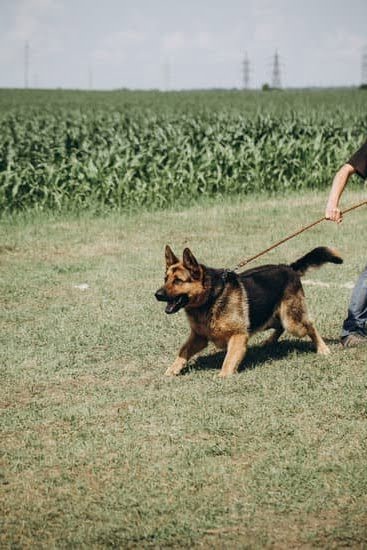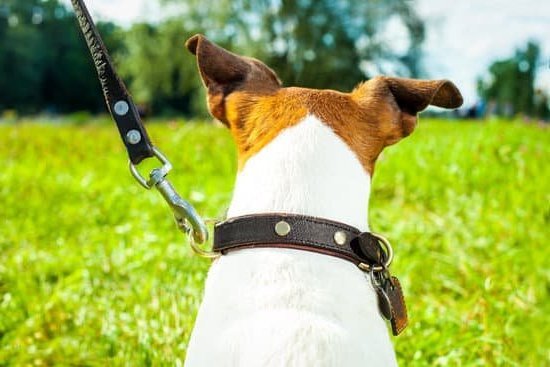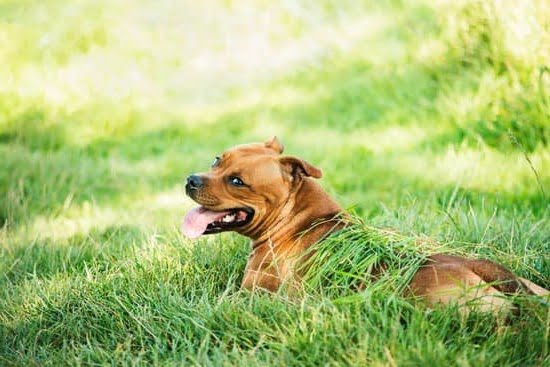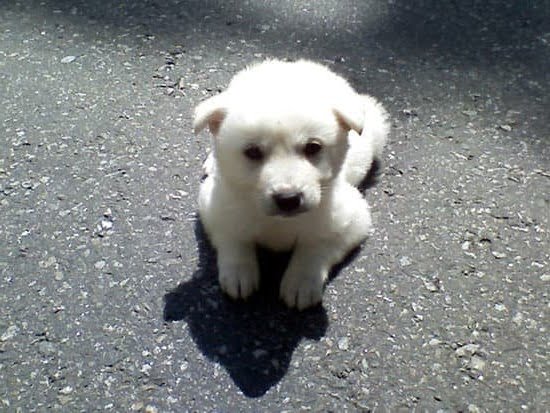Introduction
Training your dog to stay inside alone can be a daunting task. However, teaching your pet this important behavior will help limit their exposure to potential dangers and help create a safe and secure environment for them. With patience and consistency, you can teach your pup how to happily settle down when left alone!
Step 1: Introduction: Prepare Yourself and Your Dog
Before beginning the training process, it is important to make sure that both you and your pup are prepared. First, ensure that your space is fully puppy-proofed: remove anything hazardous or items that could be destroyed. Second, quickly review basic commands; it’s always helpful to have practice exercises prior to tackling a new skill! Finally, it’s wise to check in with yourself throughout the training; being present and alert during the sessions will provide the most productive learning environment for both of you.
Step 2: Start Simple & Utilize Positive Reinforcement
Once all the preparations are complete, start out easy with shorter periods of time spent away from your pup. This gentle introduction gives them the opportunity to become comfortable in their space without feeling overwhelmed. Use positive reinforcement such as treats or toys when they sit quietly to reward a job well done. During this stage of teaching, ensure that all interactions remain positive; saying “no” or disciplining in any form can often cause fear or confusion for dogs, leading them to act out.
Step 3: Gradual Increase Alone Time
With patience and gentle guidance, gradually increase the amount of time that you spend away from your pup until they have become confident enough in their abilities to stay inside alone while you are gone for extended periods of time if needed. Again, use positive reinforcement techniques along with plenty of verbal praise throughout each session — even just small successes deserve acknowledgement!
Conclusion: Achievement Unlocked
Training your dog on how to stay inside alone will require patience and consistency — however seeing them exhibit this skillset effectively is well worth any effort put forth! Additionally, having set expectations on staying inside while unattended keeps both humans and animals safe by reducing exposure risk from environmental hazards like car exhaust from busy city traffic or danger associated with wildlife encounters outside of their homes.
Understanding Your Dog’s Nature and Temperament
Before attempting to train your dog to stay inside alone, it is important to understand its nature and temperament. Some dogs are naturally more comfortable being alone than others; however, if your pup is not used to going home solo, this could cause them some stress or anxiety. Pay close attention to your dog’s behavior when left alone, and talk with a veterinarian or a trained professional if you have concerns about their emotional development. Additionally, look into the breed of dog that you have; certain breeds may require more patience and effort in house-training due to their high energy levels or need for companionship. Knowing what sort of pup you have can help you better prepare yourself and tailor a training program that works best for both of you.
Preparation
Before you train your dog to be inside alone, it is important to designate an area suitable for them. This should be a safe space that they are able to occupy while you’re not around. You can do this by setting up their bed and supplying them with toys, treats and food bowls. Additionally, make sure the area is blocked off from any dangerous objects inside the home; for example, the kitchen and higher shelves with potential hazardous items like cleaning supplies should not be accessible. Finally, create a regular routine for your dog that takes place before you leave the house so they know what will happen when you’re away- bring them outside for one last potty break then bring them nice and cozy into their designated area for some rest or playtime.
Establishing Routines for Alone Time
Start by setting up a few routines for when you’ll be away from home. When it’s time for you to leave, take your dog for a morning walk and provide them with some playtime and exercise. This will give them an opportunity to get out all of their energy before being left alone in the house. Additionally, make sure your pup is well fed and has been taken care of before leaving. Provide them with plenty of water, toys, and maybe even a chew bone so they have something to stay occupied while you’re gone. Lastly, keep your departures and arrivals consistent – this will help inform your dog when it’s time for you to leave and when you’ll be home soon.
Setting Up the Environment
Before training your dog to stay inside alone, you should first make sure that the environment is tailored to their needs. Make sure the space is comfortable and safe, and that it has amenities that cater to what they enjoy. For example, provide toys, treats, comfortable bedding, and chew-friendly items if your pup enjoys chewing. If they need some type of enrichment while away from you (such as a puzzle or stuffed Kong), add in this activity to keep them occupied. Additionally, try covering windows with curtains or shades to reduce outside noise and stimulation. Additionally, try playing calming music or white noise in the space to provide additional comfort for your pet during their alone time. When the environment is set up for success for your pup, it can make a world of difference when coming back from work each day.
Introducing Your Dog to the Experience of Alone Time
Before you can begin to train your dog to stay inside alone, it is important to introduce them to the experience slowly. Start by placing them in a secure and comfortable space within the house where they can explore at their own pace. Include their favourite toys and treats as rewards for being calm, and be sure to take out all items that may pose a danger while you are away. An hour or two spent in this area should begin giving them a feeling of familiarity with being left inside. Once they seem comfortable, gradually increase the amount of time they spend alone in the house until they are able to handle longer periods without distress.
Exercise and Mental Stimulation
Exercising your dog is essential when you want to train them to stay inside alone. If your pet feels mentally and physically stimulated, they are less likely to experience separation anxiety or be destructive while you’re away. Take them out for walks at least twice a day or even invest in some interactive toy puzzles that reward them with food when they work it out. This keeps their brains active and allows them relief from their boredom. For physical stimulation, consider teaching them agility exercises or something like fly-ball that requires teamwork between both of you.
In addition to getting regular exercise and mental stimulation for your dog, there are other things you can do to keep them calm and content when left alone inside the house. Setting up routines is important—make sure meal times, potty breaks and playtimes occur around the same time each day–and let your pup get used to the scheme before leaving them unsupervised for any length of time. You should also provide plenty of cozy areas where they can curl up or hide behind if they feel startled while home alone—a kennel can help but make sure it is a safe space rather than a confinement area. Finally, pay attention to the sounds that might agitate your pup; avoid having the TV on too loud or making sudden noises by closing windows gently instead of slamming shutters, for example. Your four-legged friend will soon learn that being home alone can actually be quite enjoyable!
Tips for Dealing With Separation Anxiety
Separation anxiety can be a difficult issue for owners and their canine companions to manage. The best way to deal with it is to provide your pup with plenty of gradual exposure and positive reinforcement. The key is to help him become comfortable with short periods away from you, building up these durations as he learns how to cope. Here are some tips for helping your dog to stay inside alone:
• Make sure the environment is comfortable: Ensure that your home is comfortable for your pup by providing necessary items such as crates, toys, blankets and other items. Consider playing white noise or soft music in his “safe place” area during the day when you’re away. Aromatherapy sprays like lavender can also help calm him in his space.
• Give him plenty of exercise before you leave: If he’s not worn out beforehand then he may be more likely to pace or begin displaying separation anxiety related behaviors soon after you leave. Make sure he gets a good amount of physical activity and mental stimulation prior to leaving him alone in the house for extended periods of time.
• Don’t rush goodbye: It’s important that you don’t make your departure too abrupt or drawn out because this can contribute to increasing anxious feelings in your pup. Give them ample time (around five minutes) to get used to being without you before heading out the door each time, but not too much time where they start exhibiting signs of fear or distress at being separated from you.
• Practice COME-STAY commands: Training should always be a positive affair so work together on recall and stay commands which will allow you some control over her movements while she learns how to self-soothe when left at home alone.
• Desensitize them by starting off slow: If it’s feasible give yourself small tasks around the house so that your pup gradually gets used to long durations apart before making longer trips outside such as grocery shopping or running errands (without them). Do whatever it takes (including fake departures) until their confidence is built up enough that they feel content staying at home alone – even if it takes a few extra days than expected!
Troubleshooting
To successfully train a dog to stay inside alone, it is important to consider possible challenging behaviors and know how to address them. These behaviors can include excessive barking, chewing on furniture, digging up plants and rugs, eliminating indoors, or any other destructive behaviors. If the dog is overwhelming with excitement when its owner returns home, they should be taught to calm down first using treats as rewards when they do so before interacting with their owner. During walks and other outdoor activities with the dog try to get them used to longer times without their owners. Start by leaving for a few seconds then gradually increase the time. To ease separation anxiety you can use toys or puzzles that have treats inside for your pet’s enjoyment. If a pet is getting into too much mischief when left alone for long periods of time create distraction free spaces in your home where the dog can settle down like a kennel or bedroom with no access to dangerous items such as house plants or electric cords. A positive reinforcement program also helps where you give rewards for positive behavior such as staying still rather than punishing negative behavior as this could further scare or distress the dog and make it harder to train them in the future.
Conclusion
Training your dog to stay inside alone can provide a wonderful benefit to your pup and the entire family. Not only will you enjoy the peace of mind that comes with knowing your pup is safe, but your furry friend will also benefit from improved mental health and physical wellbeing. With consistent and loving training your pup can learn valuable lessons in patience, relaxation and self-control. By creating a safe environment where your pup feels calm, secure, and confident being alone, you can ensure that they are better equipped to handle future stressful situations on their own. The investment of quality time spent with your four-legged buddy will pay off in spades when you see them happy, healthy, and ready for anything the world throws at them!

Welcome to the blog! I am a professional dog trainer and have been working with dogs for many years. In this blog, I will be discussing various topics related to dog training, including tips, tricks, and advice. I hope you find this information helpful and informative. Thanks for reading!





